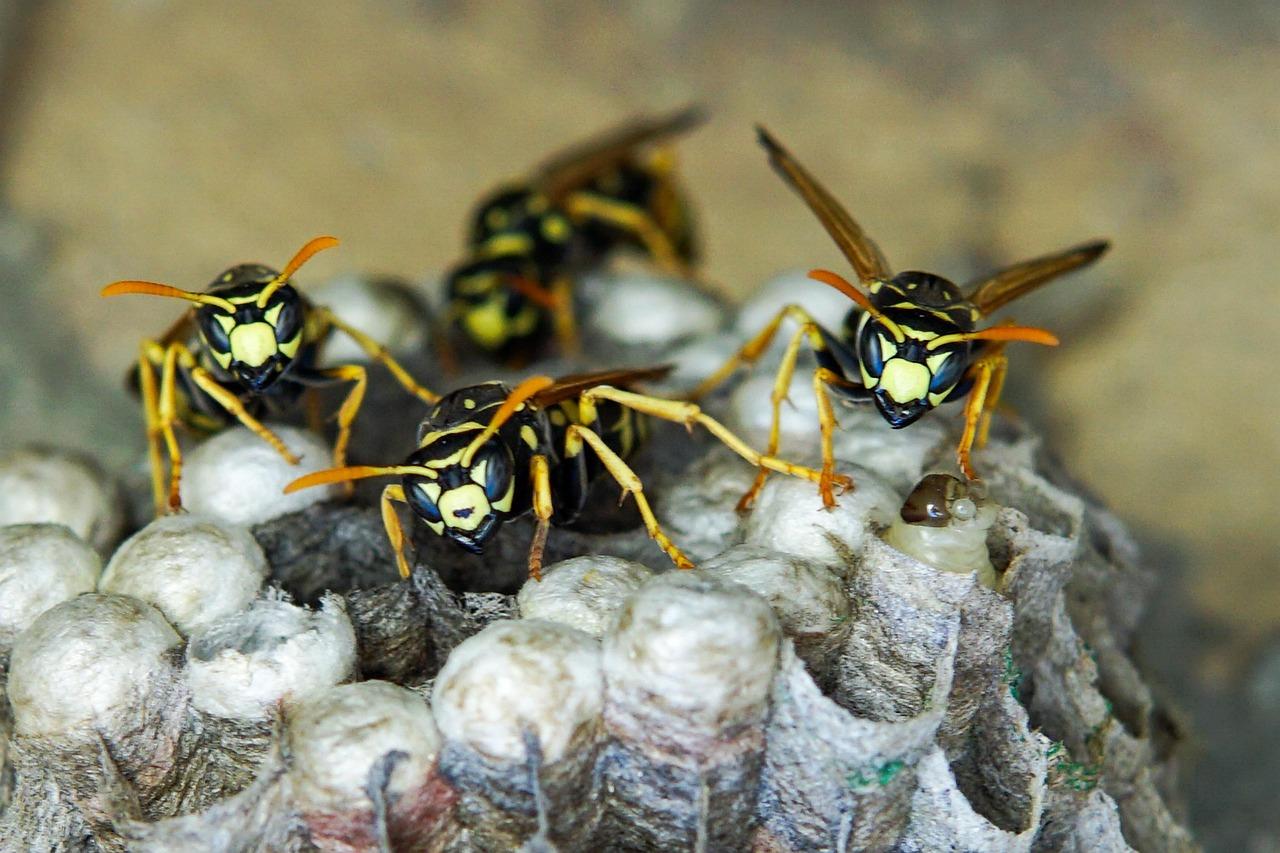Safe and Effective Hornet Removal Services for Your Home

Dealing with a hornet nest near your home can be stressful and dangerous. Learn how professional pest experts safely remove these aggressive insects and help prevent future infestations.
The Problem: When Hornets Get Too Close for Comfort
Few pests inspire fear like hornets. Their loud buzz, large size, and painful sting make them one of the most intimidating insects to find around your home. They often build nests in unexpected places — under roof eaves, inside wall cavities, behind shutters, or even within tree branches close to doors and windows.
Hornets are not just a nuisance. They’re territorial and will aggressively defend their nest if they sense danger. A single sting is painful, but multiple stings can trigger serious allergic reactions and require medical attention. I’ve seen homeowners in DuPage and Cook County try to handle hornet nests on their own, only to be swarmed within seconds.
Hornets are also skilled architects. Their papery nests may look fragile, but they can house hundreds of insects. When these colonies form near living spaces, patios, or children’s play areas, safety quickly becomes a real concern. That’s where hornet removal services play an essential role — not just for comfort, but for protection.
Why DIY Hornet Removal Can Go Wrong
It’s tempting to tackle a hornet problem yourself, especially when you spot a small nest early in the season. Hardware stores sell sprays promising instant results, and online tutorials make it look simple. But in reality, DIY removal is one of the most dangerous pest control mistakes a homeowner can make.
Here’s why:
-
Hornets attack in groups. When threatened, they release pheromones that alert the colony, triggering mass aggression.
-
Spraying from a distance isn’t enough. Even if you kill a few hornets, the queen often survives inside the nest, allowing the colony to rebuild.
-
Timing and weather matter. Hornet activity peaks during daylight. Attempting removal during the wrong time of day can provoke attacks.
-
Hidden nests go unnoticed. A visible nest may not be the only one. I’ve found multiple colonies around single homes one near a gutter and another deep in an attic vent.
In one Hanover Park case, a homeowner sprayed a small nest hanging from a tree branch. Moments later, hornets poured out, chasing him across the yard. He was stung six times and ended up needing emergency care. When we later inspected, we discovered a much larger nest behind the siding that the spray hadn’t touched.
This is why professionals emphasize safety first. Hornet control requires both experience and specialized equipment to ensure total elimination without risk to people or pets.
Case Study: A Hanover Park Family’s Close Call
Earlier this summer, a family in Hanover Park called us after discovering hornets entering a vent near their attic. At first, they thought it was just a few stray insects. Within a week, they noticed dozens hovering near their gutters and roofline.
Their home, built in the early 1990s, had wood fascia boards and an open soffit area — perfect for hornet nesting. We began with a thermal inspection and quickly located a large nest tucked inside the attic insulation. The colony had likely been growing for months, undisturbed.
Our technicians sealed off the area, wore protective gear, and applied a controlled treatment directly into the nest. Once the hornets were neutralized, we carefully removed the structure and disposed of it. Afterward, we sealed the entry gaps and applied a preventative dust treatment to discourage future nesting.
The family later told us that before we arrived, they hadn’t been able to let their kids play outside for fear of getting stung. After our visit, they could finally enjoy their backyard again.
This situation highlights the value of professional expertise — not only in removing hornets but also in identifying how and why they appeared in the first place.
The Solution: How Professionals Handle Hornet Infestations Safely
Professional hornet extermination services take a structured, safety-first approach to both identify and remove hornets effectively.
1. Thorough Inspection
Experts start by locating the nest and determining the species. Bald-faced hornets, for example, often nest in trees, while European hornets prefer enclosed spaces like walls or attics. Identifying the species helps determine the best removal strategy.
2. Safety Measures and Equipment
Technicians use protective suits, face shields, and extendable tools to treat nests safely — often from a distance. Unlike consumer-grade sprays, professional treatments penetrate deep into the nest and eliminate all life stages, including the queen.
3. Targeted Treatments
Depending on the location, treatments may include residual insecticides, aerosol dust, or foam applications that reach hidden chambers. These treatments are designed to neutralize the colony without dispersing hornets into nearby areas.
4. Nest Removal and Site Repair
After treatment, the nest is removed to prevent decay or future pest attraction. Technicians then seal entry points, repair minor gaps, and apply preventative solutions around gutters, siding, and rooflines.
5. Prevention and Follow-Up
A follow-up inspection ensures no hornet activity remains. Homeowners also receive tips on how to reduce nesting sites — like trimming vegetation near the house, securing trash lids, and repairing cracks in exterior siding.
This complete approach not only removes the immediate threat but also reduces the chance of future infestations.
The Local Challenge: Why Illinois Properties Attract Hornets
Illinois’s warm summers and abundant greenery make it a perfect breeding ground for hornets. Homes in Cook and DuPage counties often have wooden siding, overhangs, and garden sheds — all ideal nesting environments.
In older neighborhoods, hornets frequently nest in hollow tree trunks or abandoned birdhouses. Newer suburban homes, on the other hand, often face infestations under decks, eaves, or in exterior vents.
Local pest experts understand these patterns and tailor treatments accordingly. They know which hornet species are most common in specific areas, how seasonal changes affect their behavior, and the safest ways to handle nests based on local building structures.
The Hidden Dangers of Ignoring Hornet Nests
Some homeowners try to “wait it out,” hoping hornets will abandon the nest in winter. While colonies do die off in cold weather, the queen often survives by finding shelter nearby — sometimes inside attics or wall cavities. When spring returns, she rebuilds the colony in the same location.
Leaving a nest untreated can also attract other pests. Abandoned hornet nests often become homes for spiders, beetles, or even mice. The longer the nest remains, the higher the risk of secondary infestations.
Additionally, hornets play an important role in pollination, but removing them safely ensures they don’t pose a danger to humans. Responsible pest control focuses on relocation or controlled elimination methods when possible, balancing safety with ecological care.
How to Prevent Future Hornet Problems
Once your property is hornet-free, prevention becomes key. Here are a few expert tips:
-
Inspect regularly — Check eaves, fences, and sheds in early spring for small nest beginnings.
-
Seal gaps — Caulk cracks around windows, soffits, and utility lines.
-
Keep food covered — Open trash or fruit trees can attract hornets looking for sugar.
-
Trim vegetation — Overgrown bushes and trees near the house give hornets shelter and protection.
-
Call professionals early — A small nest is easier and cheaper to remove than a mature one.
Taking these steps early helps prevent large colonies from developing near your home.
The Human Side: From Fear to Relief
As a pest control professional, I’ve seen how stressful hornet infestations can be. People often feel trapped, afraid to use their backyard, open a window, or even walk to the garage. Children and pets become anxious, and homeowners lose peace of mind.
When we complete a job, the relief is instant. Seeing families enjoy their outdoor spaces again, without fear of stings, is the most rewarding part of this work. That sense of safety is what hornet removal services truly deliver, not just extermination, but confidence and calm restored.
When to Call for Help
If you’ve spotted hornet activity near your roofline, garage, or trees, don’t wait for the problem to escalate. Professional help ensures the job is handled safely and thoroughly.
Our trained technicians specialize in safe hornet removal services for homes and businesses throughout Illinois. Whether the nest is large, hidden, or difficult to reach, we have the tools and experience to eliminate it completely and prevent it from returning.
Contact a trusted local pest control team today to schedule an inspection and take the first step toward a safer, hornet-free home.





